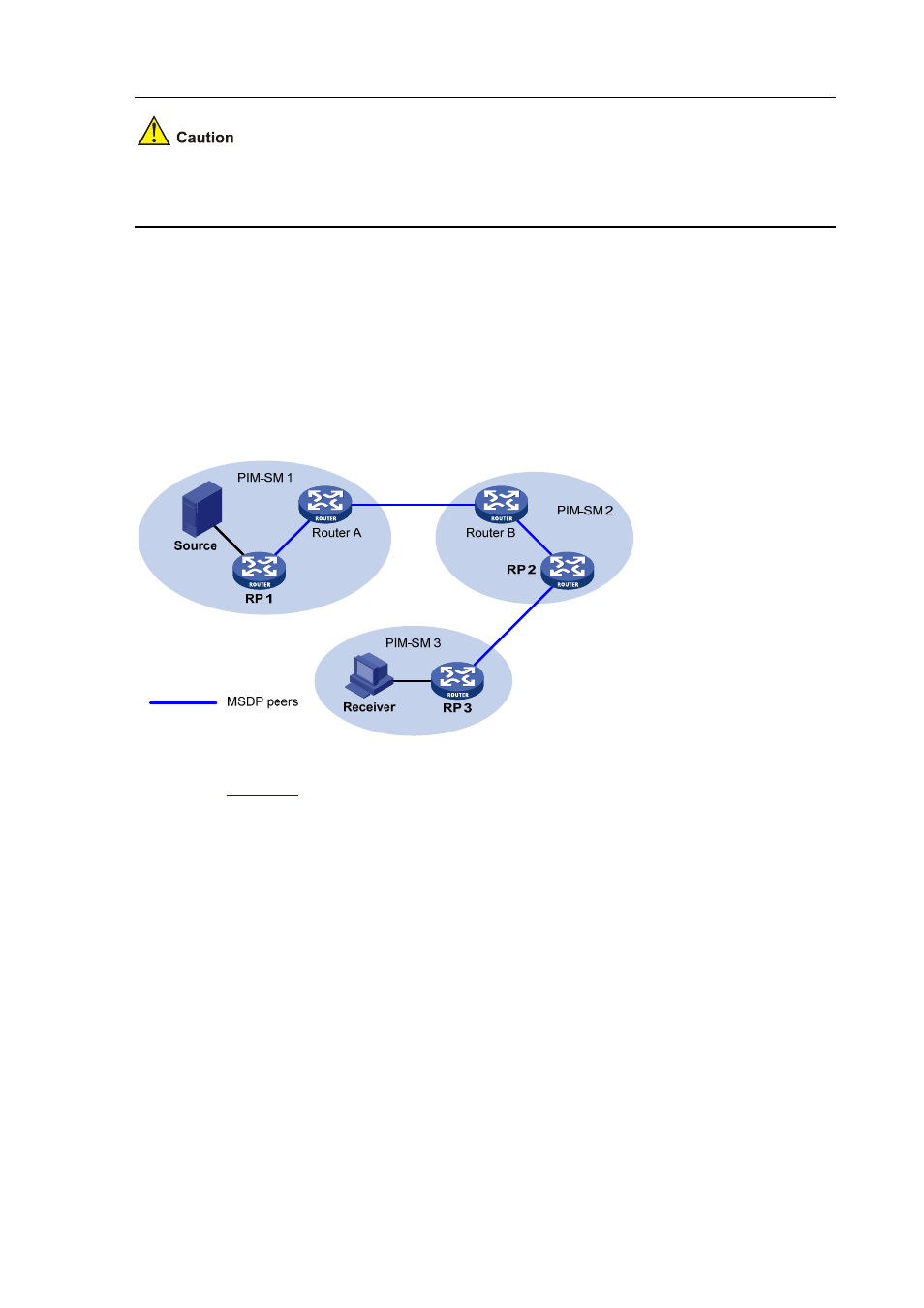How msdp works, Msdp peers – H3C Technologies H3C S7500E Series Switches User Manual
Page 203

7-2
z
MSDP is applicable only if the intra-domain multicast protocol is PIM-SM.
z
MSDP is meaningful only for the any-source multicast (ASM) model.
How MSDP Works
MSDP peers
With one or more pairs of MSDP peers configured in the network, an MSDP interconnection map is
formed, where the RPs of different PIM-SM domains are interconnected in series. Relayed by these
MSDP peers, an SA message sent by an RP can be delivered to all other RPs.
Figure 7-1 Where MSDP peers are in the network
As shown in
, an MSDP peer can be created on any PIM-SM router. MSDP peers created
on PIM-SM routers that assume different roles function differently.
MSDP peers on RPs
z
Source-side MSDP peer: the MSDP peer nearest to the multicast source (Source), typically the
source-side RP, like RP 1. The source-side RP creates SA messages and sends the messages to
its remote MSDP peer to notify the MSDP peer of the locally registered multicast source
information. A source-side MSDP peer must be created on the source-side RP; otherwise it will
not be able to advertise the multicast source information out of the PIM-SM domain.
z
Receiver-side MSDP peer: the MSDP peer nearest to the receivers, typically the receiver-side RP,
like RP 3. Upon receiving an SA message, the receiver-side MSDP peer resolves the multicast
source information carried in the message and joins the SPT rooted at the source across the
PIM-SM domain. When multicast data from the multicast source arrives, the receiver-side MSDP
peer forwards the data to the receivers along the RPT.
z
Intermediate MSDP peer: an MSDP peer with multicast remote MSDP peers, like RP 2. An
intermediate MSDP peer forwards SA messages received from one remote MSDP peer to other
remote MSDP peers, functioning as a relay of multicast source information.
2) MSDP peers created on common PIM-SM routers (other than RPs)
